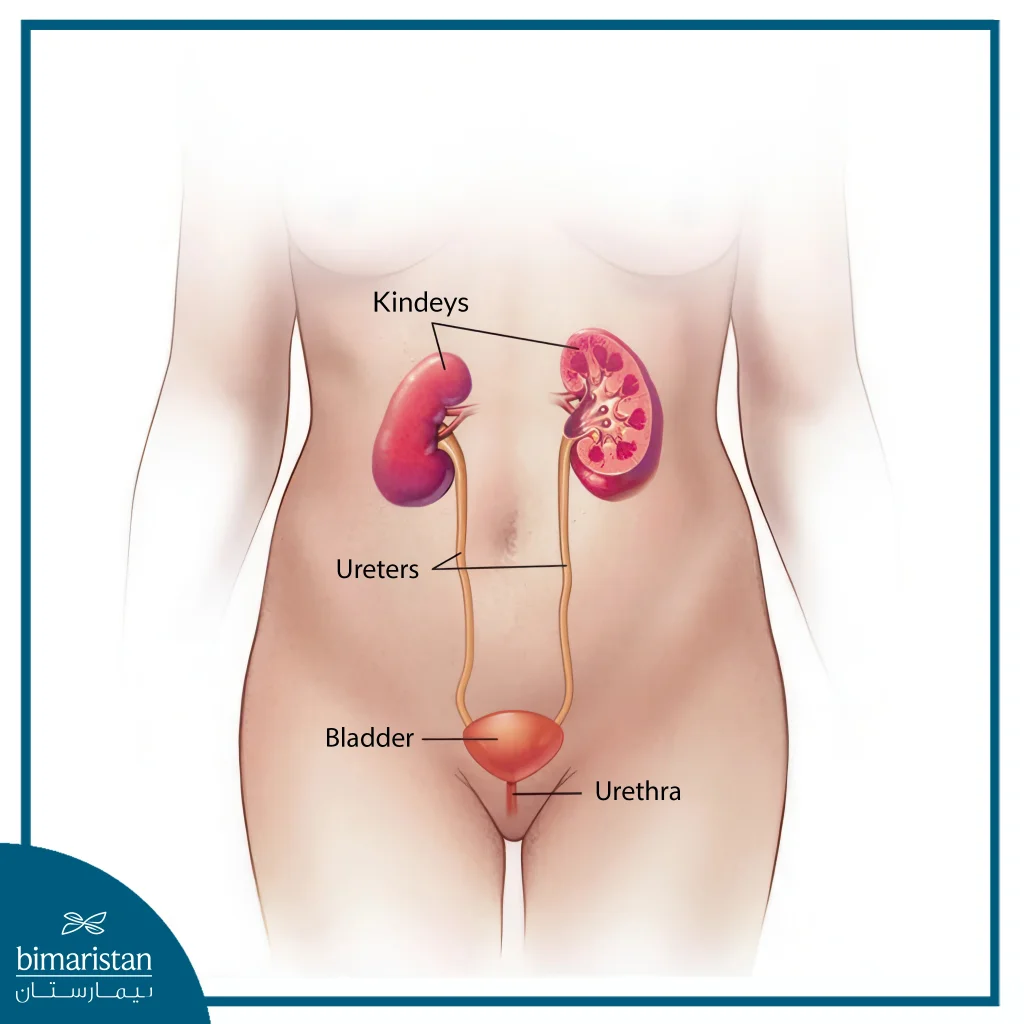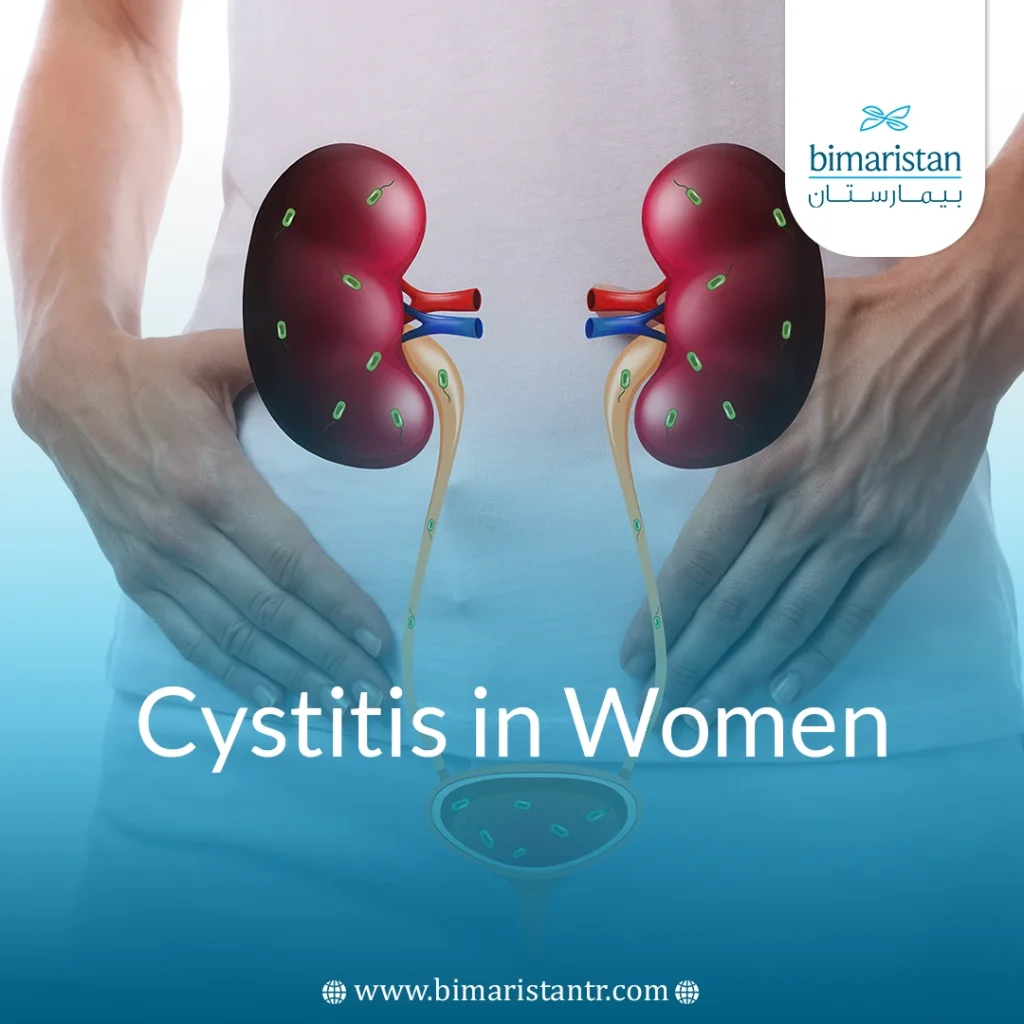Cystitis in women is a common condition, primarily due to their shorter urethra, with one in five experiencing recurrent infections, especially during sexual activity or pregnancy. Early diagnosis and prompt treatment are crucial for preventing complications, such as kidney infections, while also alleviating symptoms like painful urination, improving quality of life, and preventing further progression.
What is cystitis in women?
Cystitis in women refers to the inflammation or infection of the bladder lining, most often caused by a bacterial infection. It is a common form of urinary tract infection, particularly prevalent in women due to their shorter urethra, which allows easier bacterial entry. Cystitis is classified into two types: acute, which appears suddenly with painful symptoms and often resolves quickly with treatment; and chronic, which is persistent and may recur intermittently. It can affect women of all ages but is more frequent among those who are sexually active or pregnant, with most women likely to experience it at least once in their lifetime.

Causes of cystitis in women
Bacterial infection
Cystitis in women is most commonly caused by a bacterial infection, particularly by E. coli, a bacterium that resides harmlessly in the intestines. However, these bacteria can migrate from the anal region or nearby skin to the urethra and ascend to the bladder, where they begin to multiply, triggering inflammation and irritation of the bladder lining. This often occurs due to inadequate hygiene practices or sexual activity.
Risk factors for cystitis in women
Several factors increase the likelihood of cystitis in women:
- A shorter urethra in women: Women’s urethra is shorter than men’s, making bacteria travel a shorter distance to reach the bladder.
- Frequent sexual activity: Sexual intercourse makes it easier for bacteria to enter the urethra due to mechanical friction.
- Using some forms of contraception: Such as diaphragms or barriers containing spermicides, as these methods affect the natural balance of bacteria in the vagina, facilitating the growth of harmful bacteria.
- Menopause and low estrogen: The drop in estrogen after menopause causes the tissues of the vagina and urethra to thin, weakening the natural protection against infection and increasing the likelihood of recurrence.
- A weakened immune system or the use of urinary catheters: Chronic diseases, such as diabetes, or immunosuppressive treatments can weaken the body’s ability to fight infections. Prolonged use of a urinary catheter also increases the risk of bacteria entering the bladder.
Symptoms of cystitis in women
- Strong, persistent urge to urinate
- Frequent urination in small amounts
- Pain or burning during or after urination
- Pressure or discomfort in the lower abdomen (below the navel)
- Pain in the pelvic area or lower back
- Blood in the urine (hematuria)
- Cloudy or foul-smelling urine
- The sensation of not completely emptying your bladder
- Urinary incontinence or leaking small amounts of urine
- A change in the color of your urine to a darker color
- Pain during intercourse
- Cramps in the lower back or abdomen
- Fatigue or a general feeling of tiredness
- Mild fever (and in some advanced cases, up to 38 degrees Celsius or more)
- Changes in mental status or unusual behavior (especially in older adults)
How is cystitis diagnosed in women?
Cystitis in women is typically diagnosed through a series of steps performed by a doctor, based on the severity and frequency of the condition. The diagnostic process begins with a review of symptoms and medical history and is then complemented by specific tests as needed:
First: Clinical assessment
- Physical examination and clinical review: The doctor reviews symptoms such as pain during urination, frequent urination, or a change in urine odor, as well as the patient’s medical history, including previous infections or recent antibiotic use.
Secondly: Urine tests
- Urinalysis: To detect signs of infection, such as the presence of white blood cells, bacteria, or pus.
- Urine culture: To identify the type of bacteria causing the infection and determine the appropriate antibiotic for treatment.
Third: Additional tests in special cases
- Ultrasound or CT scan: Used in recurrent cases or when the condition does not improve with treatment to detect the presence of anatomical issues or tumors.
- Cystoscopy is used to directly examine the inside of the bladder with a thin tube equipped with a camera, especially in cases of chronic or unresponsive infections. It can also be used to perform a biopsy if necessary.
Treatment of cystitis in women
Antibiotics
- The first-line treatment for bacterial cystitis in women is antibiotics, as they provide the fastest and most effective relief. Examples of common antibiotics:
- Nitrofurantoin: Effective for treating uncomplicated infections.
- Ciprofloxacin: Used in some cases, especially severe ones.
- Fosfomycin: Usually taken as a single dose to treat mild cases.
- Sulfamethoxazole-Trimethoprim (Bactrim®): Sometimes used depending on the type of bacteria.
- The importance of completing the prescribed dosage: Even if symptoms disappear within the first two days, it is essential to complete the entire treatment as recommended by your doctor to prevent reinfection or the development of resistant bacteria.
Home and supportive therapies
- Drink plenty of water: It increases urination, which helps flush bacteria out of the bladder faster.
- Pain relievers such as ibuprofen or paracetamol: To relieve associated symptoms, such as pain or burning during urination.
- Use warm compresses: Applying a warm compress to the lower abdomen may help relieve bladder contractions and discomfort.
- Rest and avoid irritants: It is best to rest and avoid sexual intercourse or irritants (such as scented products or bubble baths) during the inflammatory period.
Treating Recurrent Inflammation
- Customized treatment protocols:
- Your doctor may recommend a longer course of antibiotics.
- In some cases, the patient is referred to a urologist to investigate anatomical or pathological causes of recurrent urinary retention.
- Prophylactic medications at intercourse: Taking a prophylactic dose of antibiotics after intercourse may be helpful for some women who have recurrent infections after sex.
- Cranberry supplements: Studies suggest that cranberry supplements or unsweetened juice may help prevent infections by preventing bacteria from adhering to the bladder wall, although their effectiveness in treating cystitis in women is still being researched
Preventing cystitis in women
A combination of daily health habits can help reduce the risk of cystitis in women, especially in recurring cases. Here are the most important ways to prevent it:
- Urinate after sex: Emptying your bladder after intercourse helps flush out bacteria that may have traveled to your urethra during sex, reducing your chances of getting a cystitis.
- Avoid using scented soaps or irritating vaginal products: Avoid using feminine sprays, scented body washes, or bubble baths in the genital area, as they can irritate the urethra and bladder, making infection easier.
- Drink water regularly: Drinking enough water (6-8 glasses a day) helps boost the frequency of urination, which in turn helps flush bacteria out of the urinary tract regularly.
- Keep the genital area clean from front to back: After using the toilet, wipe from front to back to avoid transferring bacteria from the anal area to the urethra.
- Wear cotton underwear and change it often: Cotton clothing allows the area to breathe and reduces moisture, unlike synthetic or tight fabrics that trap heat and moisture, providing an ideal environment for bacteria to grow.
- Take a shower while standing rather than sitting in a tub.
- Avoid using spermicides or diaphragms as contraceptives.
- Change pads or tampons regularly during your menstrual cycle.
- Consult your doctor about the use of postmenopausal vaginal estrogen cream, if appropriate.
When should I see a doctor?
You should see a doctor in the following cases:
- Symptoms persist for more than 2-3 days without improvement.
- Blood in the urine or a high fever.
- Repeated infections more than 3 times a year.
- You’re pregnant, or the patient is a child or a man.
- If the symptoms are severe (such as severe pain in the lower abdomen).
In conclusion, cystitis in women is a common condition that is both treatable and preventable with proper care. Therefore, it is essential not to overlook symptoms, especially when they recur more than twice annually. Consulting a doctor helps identify the underlying cause and ensures suitable treatment. Health education and consistent medical follow-up are vital in reducing complications, preventing relapses, and enhancing overall quality of life.
Sources:
